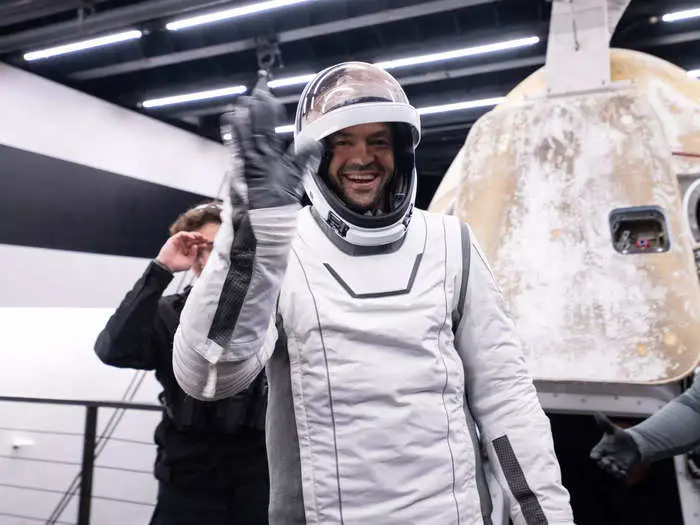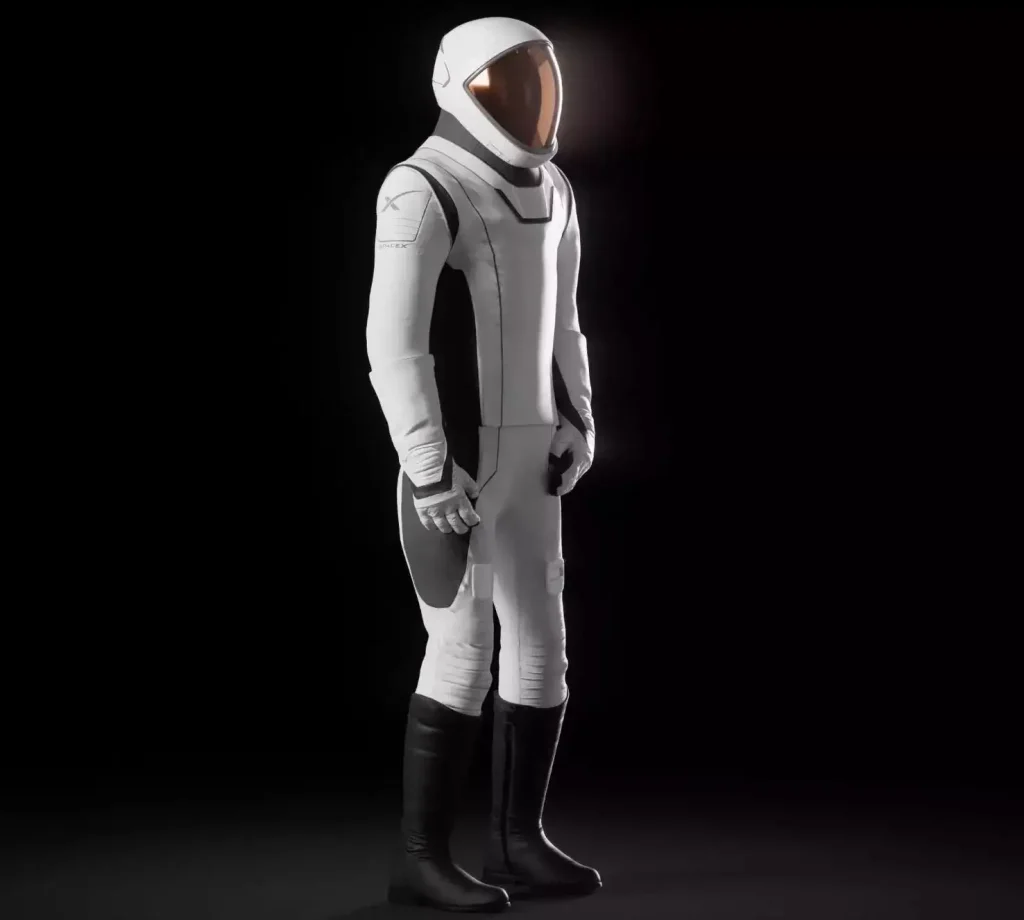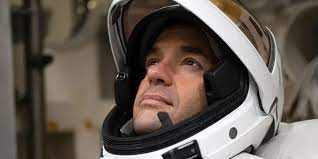Summary
- Impact-Site-Verification: d726f345-04c8-45b5-bab5-d5a809436ac1
- Jared Isaacman led the first private spacewalk during SpaceX’s Polaris Dawn mission.
- The mission broke NASA’s Earth orbit record.
- The mission tested new Starlink communication technology.
Jared Isaacman’s second trip to space felt different.
The billionaire CEO of payments company Shift4 made history two months ago when he opened the hatch of a SpaceX rocket and stepped into outer space, becoming the first person to ever perform a private spacewalk.
“Nothing separates you from the vacuum of death except the single-pane visor,” Isaacman told Business Insider.
That visor was part of SpaceX’s new extravehicular activity spacesuits—suits Isaacman described as “essentially becoming your spaceship”—which he and the four-person crew tested during their nearly five-day Polaris Dawn mission. In the event of an emergency, Isaacman and his crewmate, SpaceX engineer Sarah Gillis, would have only about two hours of oxygen.

“Everything in that environment is trying to kill you,” Isaacman said. “The radiation, the lack of a habitable atmosphere, and debris traveling at many times the speed of bullets.”
The @PolarisProgram‘s Polaris Dawn crew performed the first-ever spacewalk from Dragon, traveled farther from Earth than anyone since the Apollo program, and used @Starlink to connect with people back on Earth. pic.twitter.com/GRv5AbtlNv
— SpaceX (@SpaceX) October 26, 2024
Isaacman said the hatch stayed open for 25 minutes, during which he and Gillis each spent about eight minutes outside the capsule. The time flew by, he noted, but they still completed a test matrix that included three suit mobility demonstrations.
Isaacman compared gazing into the unknown darkness of space to the experience of traveling overseas in the 1400s, when sailors might have feared falling off the edge of the Earth or encountering mythical sea monsters.
He explained that stepping outside the SpaceX Dragon capsule felt “very different” from looking through its window, describing the intense light reflecting off Earth that “no video can capture.”
“You have all these extra senses kind of fusing together, and you gain a deeper appreciation for just how hostile and unwelcoming space is,” Isaacman said.
The spacewalk, which took place at altitudes up to 460 miles above Earth, went as planned. The Polaris Dawn crew conducted around 38 science and research experiments to study the impact of radiation on the human body, advancing SpaceX’s goal of learning more about long-duration human missions to Mars and beyond.
“The goal was to learn a lot about the mobility of the suit and also to understand its thermal regulation, especially with the big temperature swings,” Isaacman said.
The SpaceX mission, Isaacman’s second trip to space with the company cofounded by Elon Musk, required the crew to fly through risky radiation belts.
The mission surpassed NASA’s record for the highest Earth orbit and took the crew farther into space than humans have traveled since Apollo 17 in 1972. The crew also transmitted the first-ever violin performance in space using Starlink technology.
Join the Polaris Dawn crew to explore details behind some of the ~40 science and research experiments conducted during the mission. Many of these experiments will provide valuable data on human health in space, helping prepare for future long-duration space missions. pic.twitter.com/yw89eGf11U
— Polaris (@PolarisProgram) September 13, 2024
In a Netflix docuseries about Isaacman’s first SpaceX mission, Inspiration4, his wife expressed concerns about what could go wrong. This time, with Polaris Dawn, Isaacman said those worries seemed to ease.
“My family, and my wife specifically, were much more charged up and enthusiastic than they were the first time,” he told Business Insider.
Isaacman attributed some of the increased ease to the success of the first mission.

The team prepared extensively for Polaris Dawn, spending hundreds of hours testing their pressurized suits. They tested the SpaceX suits in a vacuum chamber at NASA’s Johnson Space Center, which Isaacman said was crucial to ensure that none of the materials would “create a toxic environment or explode.”
Re-entry into Earth’s atmosphere, despite the preparation and training from SpaceX, remained a source of nervousness. Isaacman said that if debris causes significant damage to the heat shield or thermal protection systems, “there’s no backup plan.”
The CEO acknowledged that while he and his family recognize the risks, they maintain the mindset that the mission is worth it.
He’s going back — and expects breakthroughs are “right around the corner.”
After landing back on Earth, Isaacman underwent about three days of medical tests before largely resuming business as usual.
Isaacman has been on the road a lot, visiting facilities and conducting debriefs. He estimates he’s only slept in his bed four or five times since his journey to space.
He has continued his role as CEO, which he said helps make his work with St. Jude and SpaceX possible. Isaacman funded both the Polaris Dawn mission and his previous mission with SpaceX. His first mission raised over $240 million for St. Jude and was named Inspiration4 to inspire support for the hospital.
But his time in space isn’t over yet. Isaacman said the Polaris Program will include three missions over the next six to nine years. He expects the second Polaris mission to see more progress in suit development, while the third mission will mark the first crewed flight of SpaceX’s Starship — the most powerful rocket system ever built, designed to help Musk realize his dream of settling Mars.
Isaacman shares Musk’s belief that humans will become a multiplanetary species, and he believes the technology to make it possible is “right around the corner.” He anticipates that fully reusable Starships will become a tangible reality within the next decade, launching on a frequent basis — whether weekly or monthly. This could pave the way for all sorts of space-related experiments, including asteroid mining and the establishment of bases on the moon or Mars.
However, the challenges won’t end with the formation of an off-world base. Isaacman pointed out that ensuring astronauts can stay alive and sane while maintaining these bases will be just as critical.
“Actually, building a civilization that can thrive in space presents a completely different set of problems,” Isaacman said.
He noted that roughly half of the people who go to space experience sickness. After landing, one of his SpaceX crew members developed a mild case of spaceflight-associated neuromuscular syndrome, which affects vision. While the symptoms subsided quickly, Isaacman highlighted it as an example of the health risks people face when venturing into space.
Isaacman also pointed out that no one has ever performed surgery or given birth in space, and living away from Earth presents significant psychological challenges.
“You’re going to live in a bubble, in a cave, or underground on Mars the entire time you’re there,” Isaacman said. “We’ll never get better than that. So there’s a lot that needs to be solved.”
While humans haven’t fully figured it out yet, Isaacman envisions a future where humans walk on Mars.
“We just have to proceed with caution and make sure we get it right,” Isaacman said. “And if we do, we stand to learn so much that it could change the course of humanity’s trajectory.”



 Viesearch - The Human-curated Search Engine
Blogarama - Blog Directory
Web Directory gma
Directory Master
http://tech.ellysdirectory.com
8e3055d3-6131-49a1-9717-82ccecc4bb7a
Viesearch - The Human-curated Search Engine
Blogarama - Blog Directory
Web Directory gma
Directory Master
http://tech.ellysdirectory.com
8e3055d3-6131-49a1-9717-82ccecc4bb7a